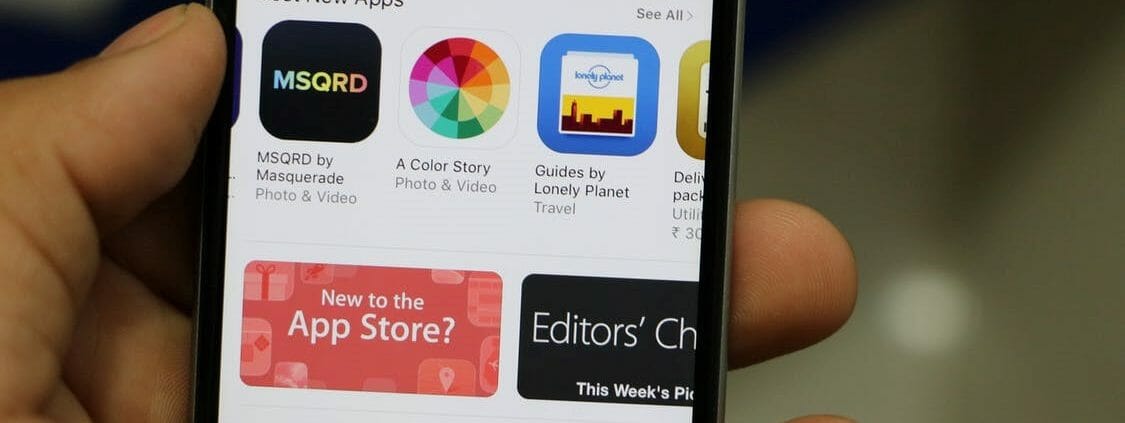How to Build an App That People Want (in 8 simple steps)
It’s official: most online users have an attention span of fewer than 8 seconds; that’s less than that of a goldfish. People want a solution to their problem and they want it now, like an impatient child at the toy store. It’s why Uber, Doordash, and Airbnb are so ridiculously successful because it takes mere seconds to make a booking and get stuff done!
All three apps reduce otherwise long and drawn out processes into a relatively straightforward booking; whether it’s a long commute, food cravings, or renting a place to crash for the night. The biggest indicator of success for any idea is instant gratification; because who has the time to wait?
So if your app can satiate the growing demand for instant gratification, then you have a market. But not all mobile apps become instant sensations. Users adore some apps and despise others. So, how can you build an app that people will want to use? In this post, we’ll unravel the thought process that goes into designing and building an app from the ground-up.
How to Build an App that People Want?
Step 1: Come Up with an Idea
Every good app must start with an idea. The app doesn’t have to be clever or reinvent the wheel. As long as it builds and improves upon an existing solution, it will resonate well with the target audience. Bonus points if it leverages instant gratification and speeds up an existing process.
Use a pen and paper to draw up a rough sketch of your app and what it should look like. Next, prepare a list of features for the app and divide them into ‘must-have’ and ‘nice-to-have’ categories. The ‘must-have’ features are essential for your app. The ‘nice-to-have’ features serve as a plus point, but they are not crucial to the overall user experience.
Step 2: Create an MVP
Once you have determined which features to include in your app, you can create a Minimum Viable Product (MVP). The MVP essentially focuses on the problem-solving features and the overall functionality of your app. All other items can be stripped or let out of the MVP to gain market exposure and gauge user demand. The MVP is the most basic concept of your app and lets you collect feedback early on. This will save you time when planning your next move.
Step 3:Design a Functional Prototype
It is good practice to make mockups or functional prototypes of your app to test with users on their phones. Simply put, a mockup contains the user interface, layout, and navigational flow of the app. It does not contain UI elements or complex color schemes. It merely gives you an idea of what the final app should look like without creating any distractions.
At NS804, we always use prototyping to help clients gain an idea about user journeys and to deliver a preview of what a final product may look like. No matter the scope of your project, having a functional visual reference makes life a lot easier. We often use Adobe Xd, Invision, and Balsamiq to create high-fidelity prototypes that look and work exactly how you envisioned.
Step 4: Get into Graphic Design
Once your project kicks off, it’s time to give more serious consideration to UX and UI. Both of these are often confused together in terms of app design. Simply put, UI stands for ‘user interface’. It is the graphical layout of your application and consists of the buttons users will tap to get from point A to point B, the text, images, text entry fields, sliders, and everything else the user may interact with.
This includes transitions, animations, layouts, and every tiny interaction on the app. This is mostly the job of UI designers who decide what the app is going to look like. They brainstorm ideas for the color scheme and button shapes, line width, and font size used.
In other words, UI is all about aesthetics.
UX stands for ‘user experience’. It defines how users interact with the app and all its assets. Is it a smooth and intuitive experience or clunky and cluttered? UX designers make sure that people efficiently accomplish the tasks they want to achieve without struggling. Success really comes down to how intricately woven the UX is with the UI – in other words, how easy or difficult it is for users to interact with the UI elements that the designers have created.
Improving UI and UX means going out of your comfort zone and investing time and money into graphic design. Your app should have high-quality graphics, crisp visual details, image assets, and even motion design- if needed. If you’re not very comfortable with graphic design, consider hiring an expert or using a graphics template.
Step 5: Hire an App Developer
Now that you have laid the groundwork for the app, it’s time to start building it. You can build iOS apps with Xcode to code in Swift or Objective C. You build Android apps with Android Studio. Consider using cloud-based servers like Kumulos Firebase to store data. Alternatively, you can seek a development company that has the right team to help you bring your ideas to life.
Step 6: App Analytics
Use Kumulos app analytics to measure your app’s performance. App analytics improves ROI in every aspect of performance because they allow you to create personalized, customer-centric apps. How users engage with menus, the time they spend on your app, the services that they like best, etc will help you optimize your app to drive up user engagement. There are many free and paid analytical tools that let you measure different user metrics such as the total number of downloads, app usage, bounce rates, etc.
Step 7: Conduct Market Research for the Perfect Launch
Like all products, your app will need a detailed analysis of your target audience. You’ll need to learn about their spending pattern and preferences. Even the most extraordinary of all apps will be of no use without if it doesn’t have an audience. Here’s what you need to ask yourself:
- Who are my competitors?
- Are there any alternative apps for potential customers to use?
- What should I charge for the app?
Once you have the right information, you can optimize your app around your users’ pain points.
Step 8: Launch the App, Get Feedback, and Update
Prepare a suitable title for the app and submit it to the App Store and Play Store for review. Once Apple and Google approve your app, you go live. Now, your potential customers are ready to download and install it.
However, this isn’t the end of your app’s journey. You will still need to promote the app on social media and through PPC campaigns. Also, take user feedback into consideration and update the app accordingly. The best way to obtain feedback is by conducting surveys and interviews.
Building an app is an on-going journey and you will run into your fair share of ups and downs. The important thing is to stay on top of the latest trends and optimize your app based on user preferences.
Get in touch with the app development pros at NS804 to learn more!










Leave a Reply
Want to join the discussion?Feel free to contribute!